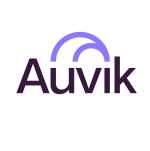We are providing managed services to our customers across multiple industries. Datadog is key to delivering these services by bringing the observability, monitoring, and alerting capabilities we need to operate at scale.
We operate custom cloud native workloads as well as ISV products such as Atlassian Jira or Confluence.
Integrating Synthetics, infrastructure, and application performance monitoring, as well as piping all logs through Datadog allows us to operate more with less with good alerting right in time.
We are providing managed services to our customers across multiple industries.
Datadog is key to delivering these services. It brings in observability, monitoring, and alerting capabilities - all of which we need to operate at scale.
We operate custom cloud native workloads as well as ISV products such as Atlassian Jira or Confluence.
Integrating Synthetics, infrastructure, and application performance monitoring, as well as piping all logs through Datadog, help with getting alerts in real-time.
We are providing managed services to our customers across multiple industries.
Datadog delivers observability, monitoring, and alerting capabilities we need to operate at scale.
Operating custom cloud native workloads as well as ISV products such as Atlassian Jira or Confluence is also something we do. Integrating Synthetics, infrastructure, and application performance monitoring, as well as piping all logs through Datadog allows us to operate while grabbing alerts in real-time.
The current way accounts are billed could be vastly improved - especially when involving multiple organizations across multiple accounts in combination with reserved commitments.
Being able to have an automatic materialized report on certain dashboards that could be exported as PDF to be shared with non-Datadog users could help a lot.
Other than that, we are more than happy with the features we use regularly.
We have been using Datadog since 2015.


















